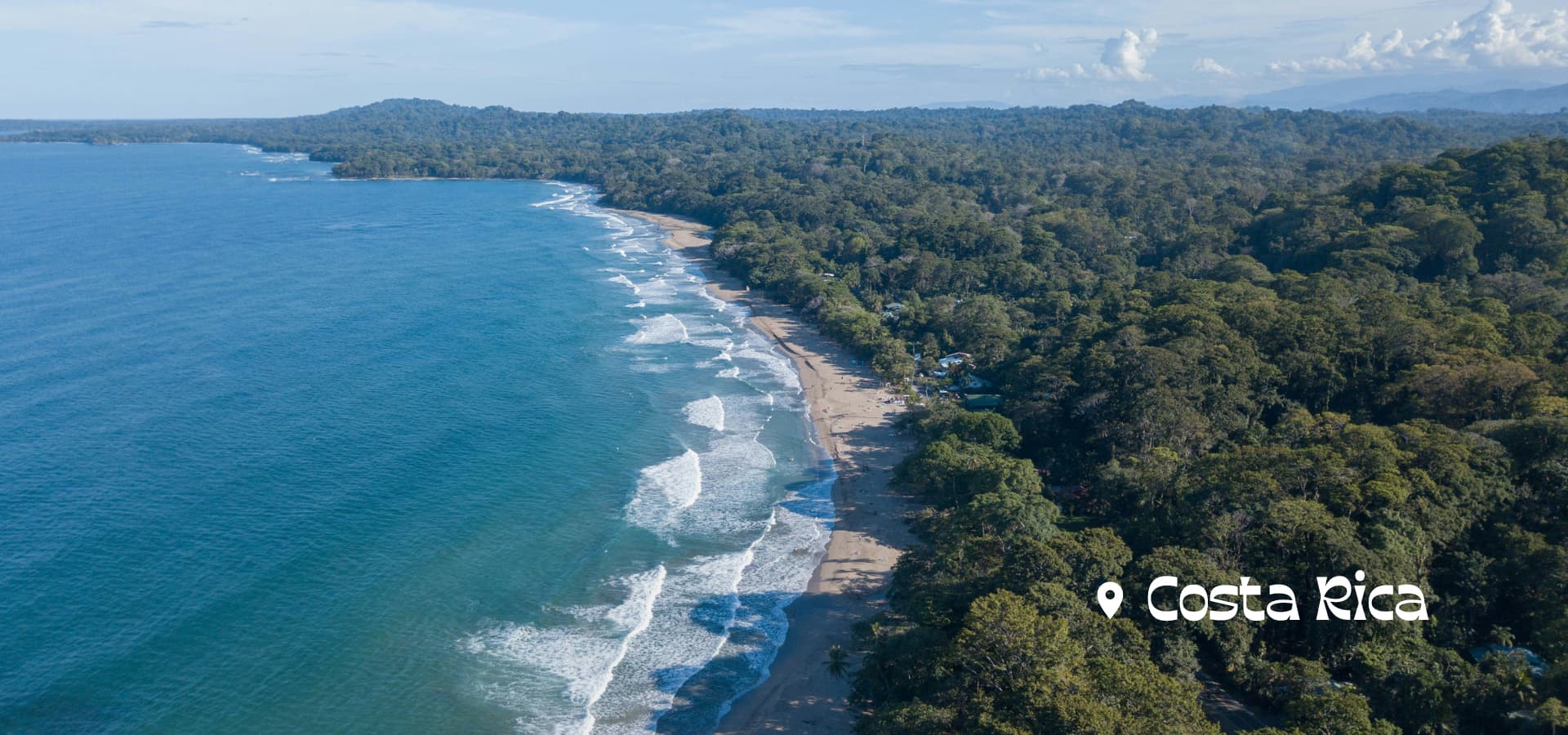Costa Rica’s protected bays, sandy bottom beaches, warm water waves, and year-round consistency make it one of the best places in the world to learn how to surf. Along its 800 miles of Pacific and Caribbean coastline, here’s where to find Costa Rica’s best beginner-friendly surf spots.
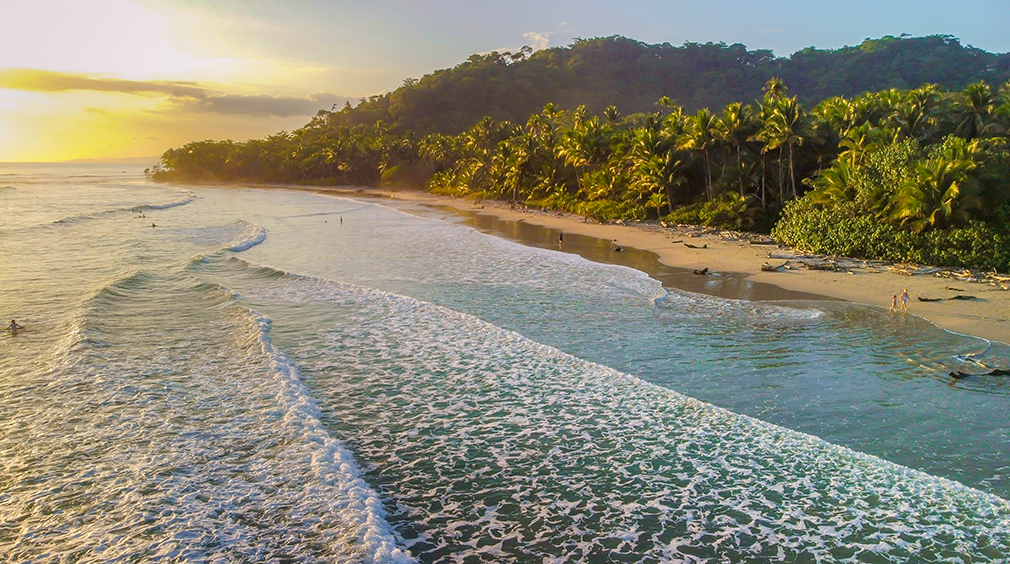
Santa Teresa
Located on the southern tip of the Nicoya Peninsula, the surf town of Santa Teresa is hard to beat in atmosphere and infrastructure, full of chill bars, vegan eateries, open-air yoga studios, and surf-centric shopping and lodging. While the main breaks on Playa Santa Teresa are often too big for beginners, the stretch of beach and ocean four miles north called Playa Hermosa was made for those still finding their balance on the board. Playa Hermosa’s consistently soft swell is perfect for practicing your pop-up on gentle greens or in the whitewater. It’s where many of the surf schools operating in Playa Santa Teresa will take you anyway.
Best time for beginners: December to February at mid to high tide
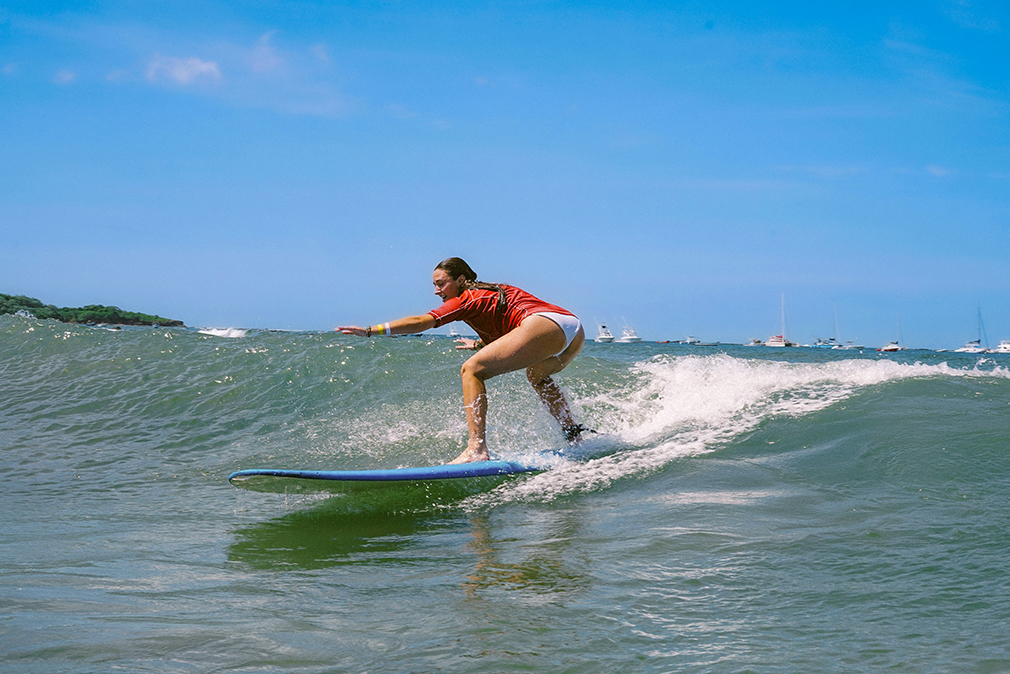
Tamarindo
Positioned on Costa Rica’s northern Pacific coastline in the Guanacaste province, Tamarindo just might be the best beginner-friendly surf destination in Costa Rica, especially if you’re looking for an epic nightlife scene to pair with your days in the salty sea. The main break at Playa Tamarindo is sand-bottomed, an easy paddle out, and naturally sheltered from big swell by Isla Capitán offshore. As long as you steer clear of Pico Grande and Pico Pequeño, there are no rocks or reefs to worry about in the lineup—just gentle, green waves that are typically no bigger than waist-high. Once you’ve mastered the mellow waves of the main break, give the El Parqueo beach break at Playa Avellanas a try on a calm day, or head for the Palm Beach break at Playa Grande at mid to high tide for beginner-friendly green waves.
Best time for beginners: Year-round, but December and January at mid to high tide is prime
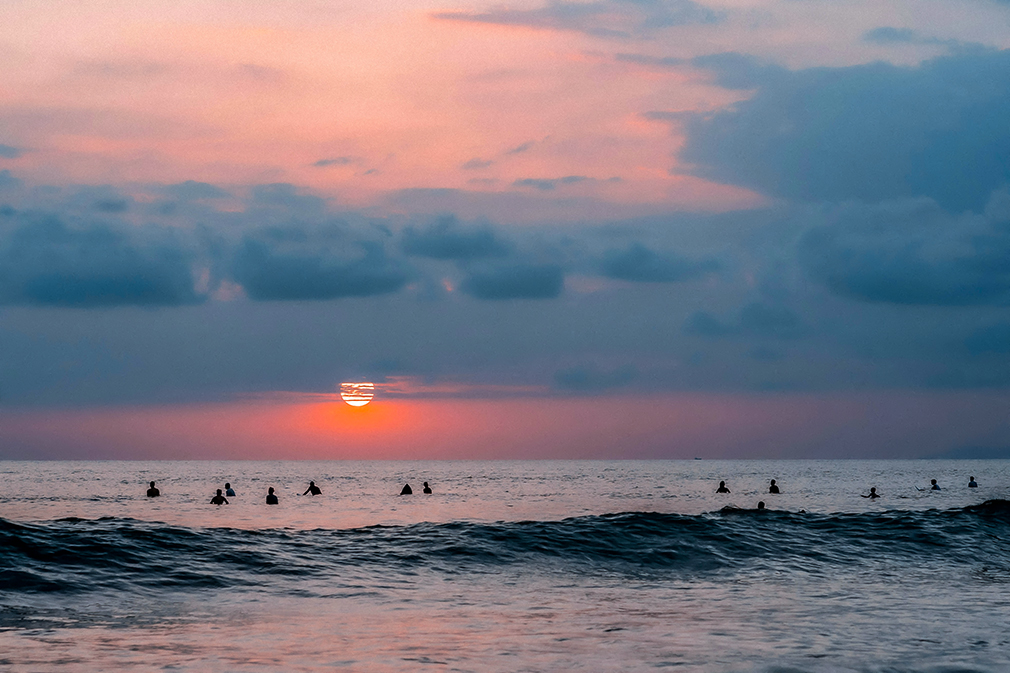
Jacó
Located on Costa Rica’s Pacific coastline and just an hour southwest of the Juan Santamaria International Airport, Jacó is not only one of the most accessible surf breaks in the country, it’s one of the most consistent, too. Unless there’s a big swell moving in, there are usually beginner-friendly waves to surf daily and year-round, especially down on the southern end of the beach. The lively and well-developed town of Jacó attracts a nice mix of both tourists and vacationing Ticos (locals). That makes it one of the rare spots in Costa Rica where you can mingle with a crowd that’s not overwhelmingly international and dine, drink, and shop at establishments not solely built for foreign tourists and their tastebuds. When you’re not surfing, there are also several nearby attractions worth day-tripping to, including the Tarcoles Crocodile Bridge, Carara National Park, Monteverde Cloud Forest, and Manuel Antonio National Park.
Best time for beginners: Year-round, but especially between December and April when the waves are smaller
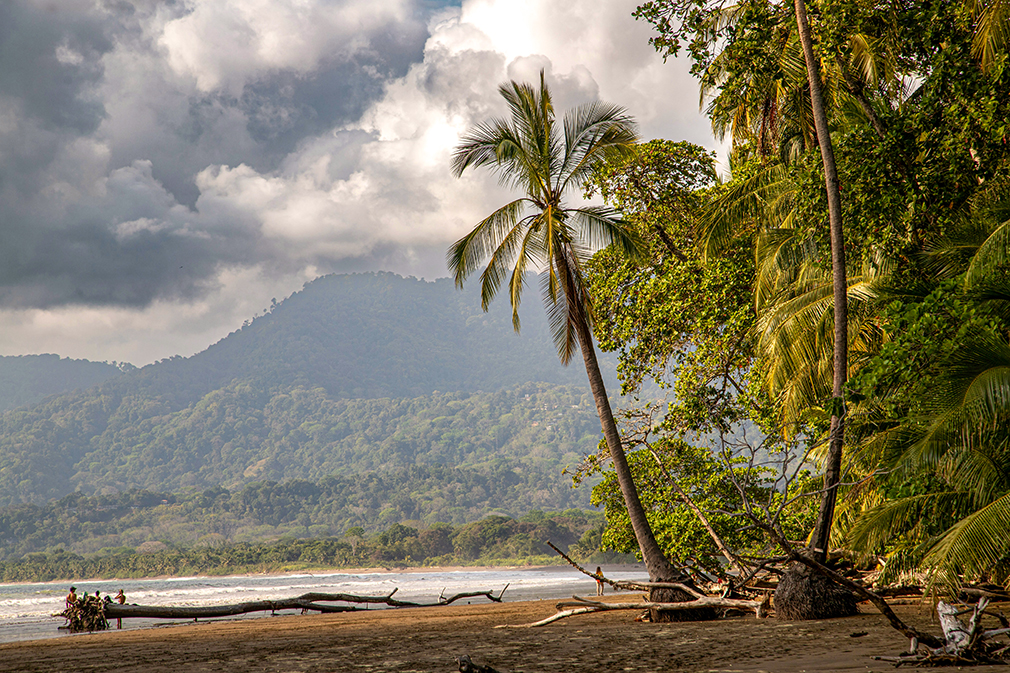
Uvita
Playa Uvita, or Playa Chaman as it’s locally known, is a sand-bottomed beach break nestled inside a marine sanctuary and sheltered from large swell by an iconic whale tail-shaped coastal formation. This means you can expect mostly empty lineups in an exotic setting of lush jungle-clad mountains and palm-shaded shores with little to no development beachside. Surfing Uvita feels secluded, yet safe. Its flat bottom creates gentle spilling waves that break far from shore, offering nice long rides for the whitewater surfers as well as something for those newly graduated to the green waves. Because Playa Uvita is inside the Marino Ballena National Park, there is a $7 USD park entrance fee that goes directly to conservation. Often, this is covered in your surf lesson or surf camp fee.
Best time for beginners: At high tide year-round or May to November (Costa Rica’s wet season) for consistently softer swell

Samara
Though not as consistent as many of Costa Rica’s other beginner-friendly surf spots, Samara, on the western edge of the Nicoya Peninsula, is still a great spot to learn and improve your skills as a beginner in conditions that are literally never big. When Samara does pick up some swell, head in at high tide for some gentle peelers, usually no bigger than knee-high. The town of Samara is also extremely laidback and charming, full of open-air cafes, surf shops, beachfront restaurants, and friendly bars with live music and karaoke. You’ll find pura vida at its finest in this laidback Costa Rica surf town.
Best time for beginners: Year-round at high tide
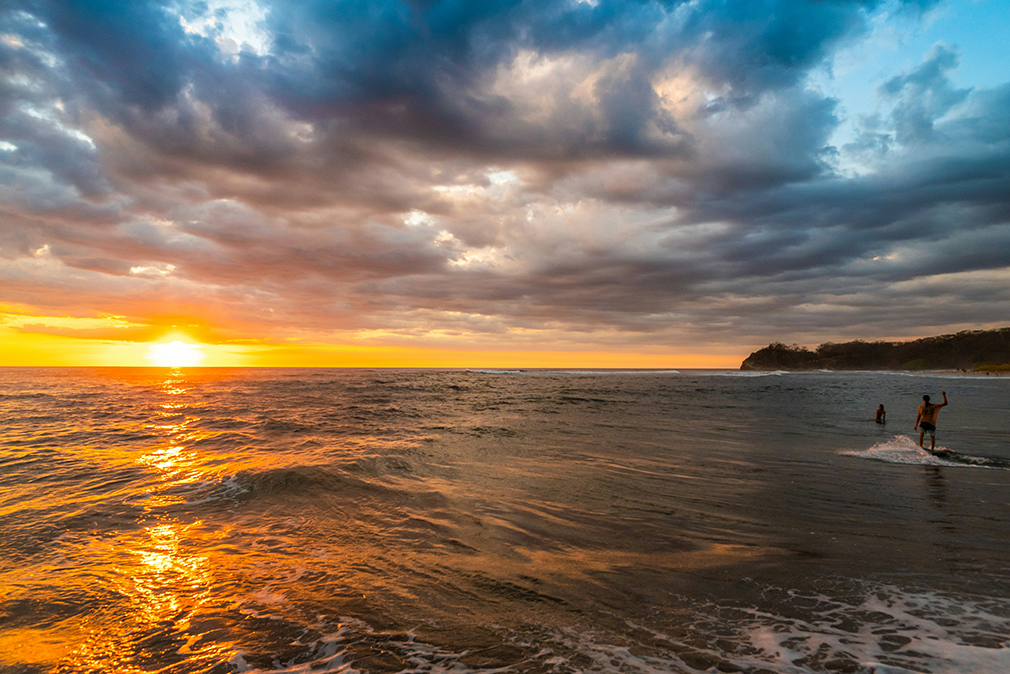
Nosara
Nosara, and more specifically Nosara’s Playa Guiones, is home to some of Costa Rica’s most fun and consistent surf. Unlike Jacó, Nosara has the consistency and the remote and tranquil setting. During the dry season, especially between December and February, the far south end of the beach is likely to be habitually clean with offshore winds holding up the waves just right for a fun ride, whatever your surf level. While the main break is quite a paddle out and not always best for surf novices, there’s a secondary break closer to shore where the waves reform and break with beginner-friendly softness.
Best time for beginners: December to April (Costa Rica’s dry season)
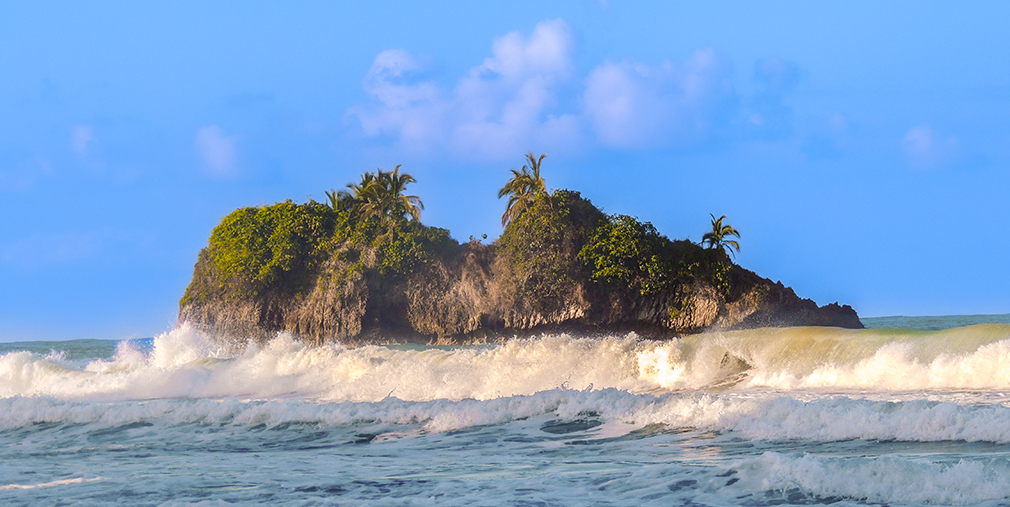
Playa Cocles
Over on the Caribbean coastline in the coconut rice-slinging, reggaeton-swaying town of Puerto Viejo, Playa Cocles is the star of the beginner-friendly surf scene. With a sandy bottom, a rock-free lineup, and mostly mushy waves, conditions are usually suitable for beginners to paddle out. Check the tides and rip currents though to be sure, especially between December and March when the bigger swell rolls in. When you’re not surfing, dig into Puerto Viejo’s party scene and its unique culture, a fascinating blend of Afro-Caribbean and Indigenous traditions.
Best time for beginners: Year-round with caution, as the swell can get big from December to April




